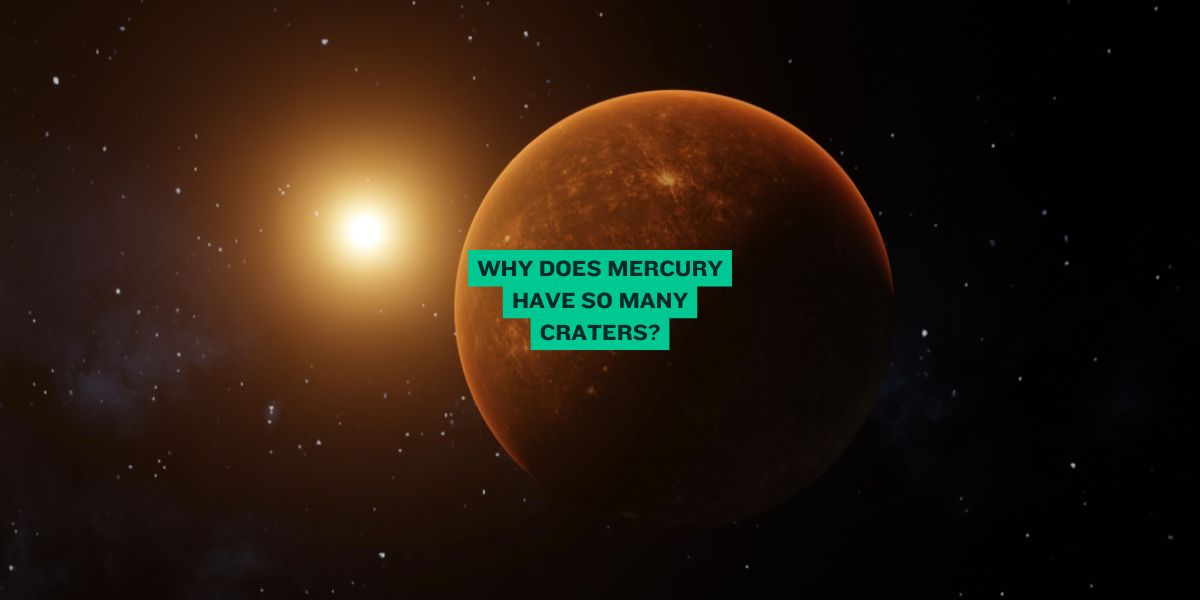Have you ever looked at the Moon through a telescope? You might have noticed it has lots of round holes called craters. But did you know Mercury, the smallest planet in our solar system, has even more craters?
Mercury is the closest planet to the Sun. It is a rocky world with no air, no water, and no life. Because it has no atmosphere, space rocks crash into it all the time, leaving behind big dents. But why does Mercury have so many more craters than Earth or even Mars?
What makes Mercury the most cratered planet in our solar system? Let’s find out!
What Are Craters?
Craters are big holes in the ground made when rocks from space (called meteoroids) smash into a planet or moon.
- Some craters are small, like a pothole.
- Others are huge, as big as a city!
- The biggest crater on Mercury is called the Caloris Basin. It is 960 miles (1,550 km) wide—bigger than Texas!
Craters stay for billions of years because there is no wind or rain to erase them.
Why Does Mercury Have More Craters Than Earth?
Earth and Mercury both get hit by space rocks. But Earth has fewer craters because:
- Earth has an atmosphere: Most space rocks burn up before hitting the ground.
- Earth has weather: Rain, wind, and plants cover old craters over time.
- Earth has volcanoes and earthquakes: These change the land and hide craters.
Mercury has no air, no weather, and no volcanoes, so every crater stays forever!
Does Mercury Get Hit by Space Rocks More Often?
Not really. Mercury doesn’t get hit more than other planets—it just keeps the marks forever.
- The Moon also has many craters because it has no atmosphere.
- Mars has some craters, but dust storms cover them slowly.
- Venus has a thick atmosphere that burns up most space rocks.
Mercury is like a giant space rock museum—every crater tells a story!
How Old Are Mercury’s Craters?
Most of Mercury’s craters are billions of years old.
- The solar system was wild long ago, with more flying rocks.
- Mercury’s surface hasn’t changed much, so old craters stay visible.
- New craters still form, but not as often as before.
Scientists study these craters to learn about the early solar system!
What Is the Biggest Crater on Mercury?
The biggest crater is the Caloris Basin.
- It was made by a huge asteroid long ago.
- The crash was so strong, it created mountain rings around the crater.
- On the opposite side of Mercury, the ground even cracked from the impact!
This crater is so big, you could fit the whole country of Mexico inside it!
Could a Meteor Hit Mercury Today?
Yes, but it’s rare.
- Most big space rocks already crashed long ago.
- Small rocks still hit Mercury sometimes, making new tiny craters.
- NASA’s MESSENGER spacecraft saw fresh craters on Mercury!
If you lived on Mercury (which is impossible—it’s way too hot!), you might see a meteor shower once in a while.
Conclusion
Mercury is covered in craters because it has no air, no weather, and no way to heal its scars. Unlike Earth, every space rock that hits Mercury leaves a mark that lasts forever.
The next time you see the Moon’s craters, remember—Mercury has even more!
What do you think? If Mercury had an atmosphere like Earth, would it still be full of craters?
📌 Frequently Asked Questions
Why doesn’t Earth have as many craters as Mercury?
Earth’s atmosphere burns up most space rocks before they hit the ground. Weather and geological activity also erase craters over time.
How many craters does Mercury have?
Mercury has thousands of craters on its surface. Some are small, while others are huge, like the Caloris Basin.
What is the smallest crater on Mercury?
The smallest known craters are just a few feet wide.
Can we see Mercury’s craters from Earth?
No, they’re too small to see without powerful telescopes.
Does Mercury have lava in its craters?
Some old craters show signs of dried lava flows.
What planet has the most craters?
Mercury is one of the most cratered, but some moons have even more.
Why doesn’t the Sun burn up Mercury’s craters?
The Sun’s heat doesn’t erase impact craters.
Has any spacecraft landed on Mercury?
No, But NASA’s MESSENGER orbiter studied it closely.
Could Mercury’s craters have water ice?
Yes, some polar craters may contain hidden ice.
Will Mercury always have so many craters?
Yes, unless new volcanic activity covers them.
